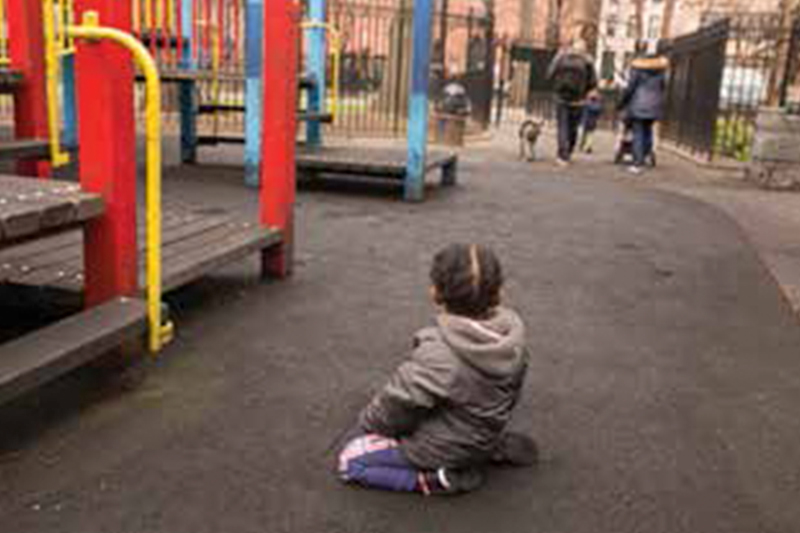
There was a time when all adoptions were closed, parents signed over their rights and rarely ever saw their children again. But time and research have shown that children who maintain connections to their biological families do better. While private adoption agencies have increasingly embraced openness, child welfare systems have not.
Meanwhile, over the past 20 years, adoptions have increased, from 38,000 in 1998 to over 50,000 last year. That’s a result of the federal Adoption and Safe Families Act (ASFA) passed in 1997. While some children find permanent homes with supportive families, others experience instability, unaddressed grief, and even homelessness.
Rise spoke with April Dinwoodie, chief executive of the Donaldson Adoption Institute, Dawn J. Post, the co-borough director of the Children’s Law Center, and China Darrington, who provides recovery support services to parents in Ohio struggling with addiction and is a member of the Birth Parent National Network. Darrington and her daughter maintain a connection with her birth son, who is adopted.
Q: Why have adoptions from foster care grown so much in the past 20 years?
Post: ASFA was passed during the crack epidemic when hundreds of thousands of kids were growing up in foster care. There was a movement across the country that children should be growing up in “forever homes.” So there was a big push to get children adopted. ASFA gave states bonuses for every child adopted.
Often, adoption is in children’s best interest. But I don’t believe that it’s in the best interest of all children. My argument is that there should be a bonus for every form of permanency.
And adoption isn’t always permanent. We started the Broken Family Adoption Project because having worked in child welfare all of these years, we would see adopted children return to family court and go back into foster care. It was pretty common to see the parent introducing themselves to the judge as the adoptive parent and then saying, “I don’t want the child back.”
In New York, Lawyers for Children recently found that approximately 20% of their caseload is adopted children who have been placed back into foster care. That’s 150 to 200 children. Covenant House, a shelter for homeless youth, also calculates that they see about 120 children per year who were adopted and are now homeless.
Q: Are child welfare systems adequately invested in helping parents before systems ever get to the point of adoption?
Darrington: On paper, yes. But in practice that varies state by state, county by county, agency by agency. The child welfare system is incredibly easy to fail in and incredibly challenging to succeed in.
It would help if we had more in-home pre-removal care and services. Because once removals happen, we’ve got another layer of trauma. I don’t think there’s a magic wand that can make every situation perfect. But I think there are other options we could try: co-parenting, shared parenting. Right now the options we have are very black and white.
Q: What are the benefits of openness when adoptions do happen?
Dinwoodie: We see in our research that openness is better for everyone but it’s most beneficial for the child, who will have access to their full identity via connections to their biological family. There are also federal funding guidelines that say you can’t cut off siblings from each other. It’s just unhealthy.
Adoption from foster care can make openness more challenging. You have that overlay of, “These parents are bad and these other parents coming in, they’re good.” You also have adults who are at odds in court. That just sets up so many challenges.
But private domestic agencies have resources to help parents and adoptive parents understand this open relationship. Right now I’m not sure any foster parent training hours are devoted to building relationships with the biological parents after adoption. The folks in the decision-making seats need to be better educated about how important it is for the child to keep family connections.
There also has to be more clinical support and clearer conversations leading up to adoption. At times parents are told, “If you surrender your rights, you’ll definitely have contact.” And then the rug gets yanked out from under them. Agencies need someone committed to making sure that when visits are agreed to, they happen.
Darrington: I participate in groups to help those of us in closed adoptions, open adoptions and open adoptions that have closed. I watch human beings get a part of their soul carved out when they have unresolved issues. In working with Foster Club kids who age out of foster care, I see the same emotional wounds in them for not being able to have their questions answered.
Any time I see my birth son face to face or my two children together, any time I get even social media updates from the adoptive mom, those things are incredibly healing for my heart. Openness is less of an “us against them,” either-or. We’re all in the same boat, going in the same direction. We love these kids.
